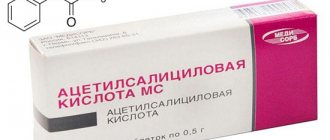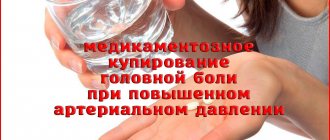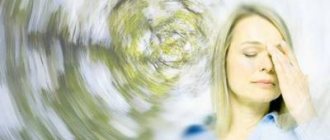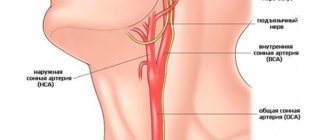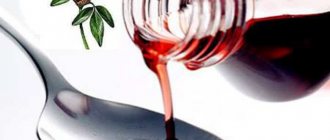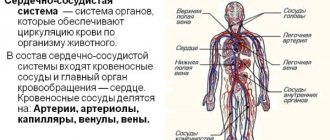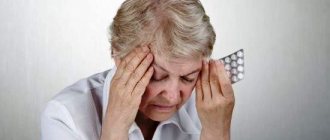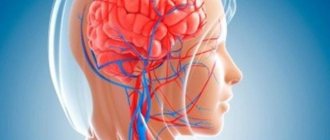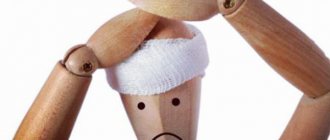Cerebral blood flow disorders are mostly potentially fatal. The most dangerous form of this disorder is considered to be a stroke.
Transient ischemic attack is a little less known to the average person. Its essence lies in a temporary acute disruption of blood flow.
The second name for the condition is microstroke, which is not entirely true. There is also a chronic disturbance of trophism (nutrition).
But there is another category of problems. Spasm of cerebral vessels or vasospasm is a sharp narrowing of small arteries, capillaries, and end sections of the circulatory network of cerebral structures.
Scientists and practitioners still do not know exactly how much the pathology in question (relatively speaking, it is a condition rather than a diagnosis) increases the likelihood of stroke and necrosis of nerve tissue.
It is clear that if the problem persists for a long time, it carries enormous risks.
Such phenomena as migraine and cluster headache are associated with vascular spasm.
Diagnosis presents certain challenges. A sensitive technique, or even a combination of similar ones, is required. Treatment is aimed at relieving the root cause, if any, of symptoms and preventing relapses.
Development mechanism
The disorder can be of two types.
- Primary is accompanied by idiopathic spasm. That is, it is extremely difficult to say what was the reason. There are no third-party pathological processes, which complicates the overall diagnosis.
- The secondary form is caused by hormonal imbalances, cardiovascular and nervous diseases. Elimination of these will most likely lead to spontaneous regression of the frequency of spasms, and then their complete disappearance without relapse.
In the first case, a rapid narrowing of the arteries and other circulatory structures occurs. For no apparent reason.
In the second, the mechanism is associated with the release of excess amounts of certain hormones: norepinephrine, cortisol, angiotensin and others. As a result of disruption of the kidneys and cardiovascular structures.
Another option is dysfunction of the autonomic nervous system, which regulates vascular tone (the primary type of the disorder most likely develops in the same way).
The following are some general points:
- A decrease in the intensity of blood flow in the brain as a result of narrowing of the lumen of blood vessels.
- Metabolic disorder in cerebral structures. Metabolic dysfunctions lead to fatigue, lethargy, and other asthenic symptoms.
This could end up being dangerous. There are a number of typical features of the pathological process:
- Usually only small vessels spasm: arterioles, capillaries and others.
- The disorder is not generalized. It is not the entire brain that is affected, but individual clusters of nerve fibers.
- The condition occurs in fits and starts. Each such episode lasts from an hour to a day; deviations in one direction or another are rarely observed.
Knowledge of the approximate mechanism allows doctors to develop thorough treatment tactics, as well as the prevention of undesirable consequences and relapses.
However, there is little general knowledge. It is required to specify each case using instrumental and, if necessary, laboratory methods as part of diagnosis.
Overdose
In case of an overdose of the drug, there is a worsening of all adverse reactions and the addition of other symptoms. The patient reports severe dry mouth, weakness and constant thirst.
Digestive enzymes are not produced, which leads to indigestion, nausea and vomiting. In addition, the activity of the sweat glands is suppressed, the skin becomes dry and pale.
Additionally, the patient’s vision deteriorates, discomfort in the eyes and lacrimation appear. Signs of allergic conjunctivitis worsen, and rhinitis develops with copious mucus discharge from the nose. A person's blood pressure decreases, drowsiness and confusion are observed, and sometimes convulsions develop.
In some cases, disorders of the liver and kidneys are observed, and organ function is disrupted. An overdose is often accompanied by an allergic reaction in the form of urticaria or Quincke's edema. The rash spreads to large areas of the body, the itching becomes unbearable, and swelling of the mucous membranes of the throat also occurs.
If an overdose develops as a result of the administration of the solution, symptomatic treatment is carried out. If it is provoked by taking pills, gastric lavage is done. Then medications are prescribed to eliminate the symptoms.
Classification
Typifications are carried out according to several criteria. The key basis is the origin of the pathological process.
Based on this, they distinguish, as already mentioned, primary and secondary forms.
They differ radically in etiology (origin). It is extremely difficult to distinguish one from the other, even using complex methods, and doctors do not always succeed.
This requires a lot of time, frequent monitoring, and dynamic observation.
The second method of classifying vasospasm of cerebral vessels is based on the prevailing clinical picture.
Symptoms make it possible to distinguish 4 forms of the disorder:
- Cerebral. With a predominantly cerebral, neurological component. This is the most common type and is also easier to diagnose.
- Coranocerebral. It is found somewhat less frequently, in only a quarter of cases or less. Accompanied by additional signs from cardiac and cardiac structures.
- Hepatocerebral form. Brain symptoms plus hepatic colic. The pancreas may also be affected. But both types are relatively rare.
- Kidney form. Gives a clinical picture of cerebral blood flow disorders and involves the excretory system in the disorder.
Classifications are used for quick diagnosis, identification of the origin of the disorder and selection of a competent therapeutic course.
Contraindications
The only absolute contraindications to prescribing spasmalgon are individual intolerance and childhood; spasmalgon is also prohibited for pregnant women.
In all other cases, the decision on the advisability of using this drug must be made based solely on considerations of the risk-benefit ratio.
If necessary, consult your doctor, but it is very rare that doctors do not recommend using this drug. Moreover, they indicate the advisability of its inclusion in the list of drugs for the home first aid kit. This can be explained very simply - spasmalgon will help in most cases, its use according to clinical recommendations is completely safe and does not require consultation with specialized specialists.
Symptoms
In development, cerebral vasospasm as such goes through a group of stages.
Between each subsequent one there may be an interval of several or even many years.
It is unknown at what stage the disorder will stop in a particular person, so it is impossible to talk about inevitability, although the probability is present and considerable.
The list of symptoms depends on the phase of development.
First stage or dystonia
Accompanied by signs of neurological disorders as a result of disruption of normal self-regulation of vascular tone.
Among the manifestations:
- A severe headache is the first sign of vasospasm and insufficient blood supply to the brain. It can be localized anywhere, spread to the temples, the back of the head, it doesn’t play a big role. The intensity ranges from significant to extreme, unbearable. In approximately 25% of cases, the pain syndrome is relatively tolerable, but painful in terms of duration and regularity.
- Feeling of numbness in the limbs and face. Loss of sensitivity or a predominant decrease in it.
- Weakness. Inability to perform normal household or work responsibilities. Tides. Redness of the dermal layer of the chest and face.
- Drowsiness.
- Nausea, rarely vomiting. Reflex relief, however, occurs, because the symptom is unstable.
- Paleness of the skin and mucous membranes. The manifestation is especially visible when examining the arms and legs.
- Dizziness. It is impossible to adequately navigate in space, because the world literally rotates. Often the patient takes a forced lying position to ease the manifestation.
- Fog in the field of vision, decreased visual acuity.
- Slurred speech, impaired articulation.
- Insomnia. Frequent awakenings at night.
- Loss of consciousness.
All these symptoms of cerebral vasospasm occur during an attack and last most of the time.
A truncated clinical picture is possible, which does not indicate either the severity of the disorder or the prospects for its further development.
Anything can be predicted only after a thorough diagnosis.
The second phase is angioedema
Destructive processes begin in the vessels. The reaction in the form of a judgment of clearance acquires a stereotypical character, that is, stability.
The manifestations are identical to the previous ones, and new ones are added:
- Weakness of the arms and legs, inability to fully control them.
- Coordination deviations.
- Further deterioration of vision up to transient blindness (which is rare and most likely indicates a transient ischemic attack - micro-stroke).
- Slurred speech.
Unlike the first phase, this one is accompanied by persistent manifestations.
A typical feature is the persistence of neurological signs even after an attack for a long time (up to several hours).
The third stage is necrotic
Insignificant (as yet) destructive foci and areas of destruction of nerve fibers are observed.
The symptoms are again unchanged, but the clinic is again supplemented by some points:
- Severe peripheral and central edema. Faces, limbs.
- Total speech and vision impairments. Perhaps other feelings.
- Decreased physical activity.
In general, the symptoms are quite typical even in the initial phase. Moreover, it does not disappear anywhere, exists most of the time and constantly makes itself felt within the framework of each new attack.
In addition to the described symptoms, others can be identified that are characteristic of the primary disease that provoked the spasm.
Additionally, it is necessary to say about the accompanying symptoms. These are, for example, pain in the right, left side, lower back, chest. Urinary disorders.
According to the form of the pathological process (four of them were named within the classification).
Medicine for dizziness and cerebral spasms
What it is
Vasospasm of the brain is a contraction of the muscle wall, which leads to an increase in tone and blood pressure.
Normally, tone creates tension, thanks to which arteries and veins have the diameter necessary for blood flow. Physiologically normal tone ensures sufficient blood circulation, protecting the brain from lack or excess of blood. Thus, this reaction protects the brain from pressure changes in other parts of the body.
However, diseases of internal organs and pathological conditions of the central nervous system provoke tone disturbances. The muscular wall of the vessel contracts more than necessary and vascular hypertonicity occurs, causing the minute volume of blood to decrease. The nerve cells of the brain suffer from a lack of oxygen and nutrients. Local ischemia occurs and neurons die. A clinical picture of deficit neurological symptoms and mental disorders appears.
Spasm can be physiological and pathological. The first option occurs when the functional state of the central nervous system and the whole organism requires it, for example, when adrenaline increases in the blood in a state of fear. Physiological spasm is a normal phenomenon for the body. Over time, when the effect of the stimulus ceases, the tone comes to a stable position.
Pathological spasm or hypertonicity is observed in vascular diseases of the brain, diseases of internal organs or pathology of metabolic processes.
Causes
Spasm is a functional state. It is caused by two groups of reasons:
The first group is psychological factors:
- Acute reaction to stress, internal worries, sleep disturbance.
- Mental disorders: generalized anxiety disorder.
- Personality disorder: hysterical and emotionally labile psychopathy.
The second group is organic or functional diseases of internal organs:
- Hypertension as a root cause.
- Inflammation of the vascular walls.
- Systemic diseases: rheumatoid arthritis, systemic lupus erythematosus.
- Pathologies of metabolic processes: pheochromocytoma, diabetes mellitus, hyperthyroidism.
Indirect causes are factors that do not play the role of the root cause of the disease, but in combination with other factors increase the risk of vascular hypertonicity:
- excess body weight;
- smoking, alcoholism;
- sedentary lifestyle;
- heredity;
- the person is over 50 years old.
Symptoms
Angiospasm of cerebral vessels is manifested by nonspecific and vegetative signs.
Nonspecific brain symptoms:
- Headache, dizziness, drowsiness.
- Fatigue, rapid exhaustion.
- Sleep disturbance.
- Distraction of attention, decreased memory capacity.
- Flashing of flies before the eyes.
- Irritability, emotional lability, increased sensitivity to light, sound and smells.
- Excessive sweating.
- Tremor of the limbs.
- Paleness of the skin.
- Dyspnea.
- Feeling of a strong heartbeat.
- Stool retention or diarrhea.
Spasm of cerebral vessels can lead to a transient ischemic attack - a transient condition in which blood circulation in the brain is disrupted and disturbances in neurological and mental functions occur. Signs of transient ischemic attack:
- decreased sensitivity;
- decreased muscle strength;
- blurred vision, tinnitus, double vision;
- nausea and vomiting;
- disorientation, retrograde amnesia;
- dizziness.
Diagnostics
In the diagnosis of spasm, the patient’s complaints, objective examination and instrumental research methods play a role.
Patients most often complain of headaches, which are combined with sleep disturbances and lack of appetite. There are also complaints of fatigue, drowsiness, and lack of motivation to do any activity.
Among the objective data, the doctor may detect high blood pressure, pale face, hand tremors, sweating, and increased heart rate.
Instrumental research methods:
- Magnetic resonance imaging in contrast angiography mode. Using MRI, you can evaluate the integrity of the vascular wall, the presence of an aneurysm, thrombosis, atherosclerosis, or congenital anomalies of cerebral vessels that can provoke arterial spasm.
- Ultrasonography with duplex scanning. Detects the same pathologies, but using ultrasound.
Treatment
Spasm can be treated conservatively, using tablets for cerebral vasospasm, and surgically.
Surgical intervention involves stenting of blood vessels. A stent is inserted into the lumen of the artery - a cylindrical metal or plastic structure that expands the diameter of the vessel and promotes blood flow. A modern version is self-expanding walls, which open after it is introduced into the bloodstream.
Medicines
The main drugs for spasm of cerebral vessels are antispasmodics - drugs that reduce the tone of the smooth muscle layer of the vessel. Antispasmodics partially or completely eliminate spasm, normalizing arterial tone.
Drugs that relieve vasospasm are divided into two groups according to their mechanism of action.
- Neurotropic antispasmodics. They act directly on the transmission of bioelectric impulses. Neurotropic antispasmodics act systemically, on most organs. Representatives: scopolamine, platifilin, atropine.
- Myotropic antispasmodics. They act directly on the tone of vascular smooth muscles. You can relieve cerebral vascular spasm with the following means: drotaverine, papaverine.
Antispasmodics exist not only in tablet form. Injections are an alternative to tablets. The representative is spasmalgon. It is administered intravenously, but its use is contraindicated without consulting a doctor.
There are nuances to the use of antispasmodics for children. It is not recommended to give drotaverine to children under two years of age, however, some manufacturers of the drug indicate that the drug can be prescribed to children under 6 years of age. For children under one year of age, medicine for vasospasm is prescribed only with the permission of a doctor.
Traditional treatment
You can relieve spasm of cerebral vessels using traditional medicine with the following recipes:
- A decoction of rosehip, St. John's wort or nettle. Each plant should be taken 20 g and placed in 200 ml of boiled water. The liquid must be infused for two hours, then filtered. The decoction should be drunk daily, several tablespoons at a time.
- Honey. You need to take 500 ml of honey and mix it with the pulp of 5 lemons. Then chop 5 heads of garlic and add it to honey and lemon. The product needs to be infused for a week, after which it is necessary to take a tablespoon daily in one go.
- You need to take 60 g of thyme and place it in a liter of boiled water. The liquid should be infused for an hour and filtered. The decoction should be drunk daily, 100 ml at a time.
Sources: https://neuromed.online/spazm-sosudov/ https://sortmozg.com/lechenie/medikamentoznoe/lekarstvo-ot-spazma-sosudov-golovnogo-mozga https://illness.docdoc.ru/takhikardiya
Causes
Development factors are numerous. Among the key ones we can name two:
- Vascular dystonia. In itself, it is a complex of signs, and not a full-fledged diagnosis, no matter how diligently Russian doctors present it.
- Slightly less often, hormonal imbalances are detected at the level of the adrenal glands, thyroid gland, and pituitary system.
As for secondary forms, they develop for a much more extensive list of reasons:
- Atherosclerosis of the carotid and vertebral arteries. As a result, the cerebral structures do not receive enough nutrients.
- Persistent hypertension. Increase in pressure.
- Brain tumors. Not necessarily malignant. Also benign (especially since they can be called that very conditionally).
- Angiopathy due to current diabetes mellitus.
- Vascular anomalies, congenital and acquired. Malformations, aneurysms.
- Neuroinfections. Encephalitis or meningitis.
- Vasculitis. Inflammatory damage to blood vessels, leading to their narrowing.
- Vertebrobasilar insufficiency and vertebral artery syndrome. Both diseases lead to vascular stenosis, which is accompanied by impaired trophism (nutrition) of the occipital lobe, cerebellum and indirectly affects other brain tissues.
Risk factors
They do not directly determine the pathological process as the cause of cerebral vascular spasms, but increase the likelihood of disorders.
- Age from 30 to 50 years.
- Excessive coffee consumption. Smoking, alcoholism, drug addiction. They provoke vasospasm even in completely healthy people.
- Heavy physical work, inadequate mechanical activity without proper preparation and training.
- Being male. According to statistical estimates.
- Psycho-emotional overload. Long work at night. Lack of sleep.
- Lack of a clear sleep and wake schedule.
- Hypothermia.
- Burdened heredity. Plays almost a key role.
- Poisoning with certain medications. This includes drugs of many groups, from glucocorticoids to non-steroidal anti-inflammatory and antipsychotics. Individual reactions to drugs are possible.
- Changes in weather and climate when moving to another region of the planet.
Accounting is carried out to determine the probable cause and predisposing factors for the development of cerebral vasospasm.
Knowing the origin of the condition, we can say more about ways to eliminate it and develop a competent treatment model.
Pharmacological properties
What are the advantages of using spasmalgon over conventional non-steroidal anti-inflammatory drugs?
The thing is that spasmalgon is not a simple non-steroidal anti-inflammatory drug - it contains several active ingredients, making this drug a combination drug. So, one tablet of spasmalgon combines several active substances, namely, which will act by mutually reinforcing the effect of each other:
- Metamizole sodium (aka analgin) is an NSAID that destroys the pathogenetic process of the pain syndrome itself.
- Pitophenone hydrochloride is an antispasmodic, which is a derivative of piperidine. It is characterized by pronounced myotropic antispasmodic activity, which makes it possible to relieve spasms of smooth and striated muscles. The action is to some extent similar to no-shpe, but is somewhat more pronounced. It is thanks to the presence of this component that spasmalgon is often recommended for use in hepatic and renal colic, when it is necessary to relax the muscles of the vessels that supply these organs with blood.
- Phenpiverinium bromide is a drug from the group of M-anticholinergics, the main effect of which is to relax the walls of the smooth muscles of the intestines. That is, the action of pitofenone hydrochloride is aimed at both types of muscles, and fenpiverinium bromide affects exclusively smooth muscle cells.
Diagnostics
Usually performed on an outpatient basis. The key specialist at the first stage is a neurologist.
If there is such an opportunity, it is even better to contact a vascular surgeon as a specialized doctor.
Further consultations with other doctors may be required, depending on the origin of the disease.
Assessment activities include:
- Oral interview and history taking. They allow you to determine the patient’s well-being, his complaints, objectify symptoms and record them. Also assume one or another etiology of the condition based on hereditary factors, individual lifestyle, bad habits and other characteristics of the body.
- Doppler ultrasound of the neck vessels, as well as duplex scanning of the brain. Both methods are used in the system to assess the state of cerebral blood flow, nutrition and its quality. Essentially it's an ultrasound.
- MRI or CT (less commonly). They are used in controversial cases if there are suspected anatomical and structural changes in the blood vessels of the brain. Moreover, one cannot do without such studies in the development of spasm of small capillaries and arterioles.
- Angiography. Contrast x-ray of blood supply structures.
Usually this is enough to determine the spasm itself, the stage of development of the condition and its origin.
In rare cases, they additionally resort to assessing the endocrine status (levels of various hormones), examining the pancreas, thyroid gland, adrenal glands, pituitary gland and other methods. As part of identifying the origin of the condition.
Attention:
It is vitally important to answer the question of what caused the disorder. Without clarifying this point, doctors deal only with symptoms, the main factor remains untouched.
Analogs
If it is impossible to use the medicine, suitable analogues with similar therapeutic properties are selected.
Most often it is replaced with the following drugs:
- Spazgan is a remedy with a similar composition and therapeutic properties that helps eliminate pain, spasm of blood vessels and muscle tissue of internal organs. Available in tablet form and as a solution for injection. Prescribed for adults after consultation with a doctor.
- Baralgin – tablets and injection solution, which has an effect due to the content of metamizole sodium. It has pronounced properties and is highly effective, but is used only as prescribed by a doctor.
- Baralgetas - tablets and solution for injection into the muscle and vein. It has a composition similar to Spasmalgon and has anti-inflammatory, analgesic and antispasmodic effects.
Any of the analogues of the product may be used only as prescribed by a specialist and after examination.
Treatment
Therapy is also carried out in an outpatient (home) setting, excluding acute conditions with a pronounced clinical picture.
If we talk about treatment itself, drugs from several pharmaceutical groups are used.
- Antispasmodics: No-shpa, Drotaverine. Normalize the tone of blood supply structures.
- Medicines for dilation of arterioles and capillaries: Cavinton.
- Drugs that normalize the nutrition of nerve fibers: Piracetam and other similar names.
- Antihypoxants. They reduce tissue oxygen demand while simultaneously restoring cellular gas exchange. Actovegin. Short courses.
Drugs for treatment are selected based on the case and origin of the disorder.
The average scheme is not suitable and will most likely not lead to a useful result.
Attention:
Contrary to widespread advice about eliminating the violation with cold or hot water, this is strictly prohibited.
You can quickly relieve cerebral vascular spasms only with tablets: Eufillin, Drotaverine, Dibazol, No-shpa.
This is the only reliable way to restore trophism and gas exchange in tissues.
Anything else can lead to dangerous results, including worsening the narrowing of the lumen of arterioles, capillaries and even greater complications of the disorder.
In the future, you need to adhere to a healthy lifestyle: adequate sleep for at least 8 hours, emotional peace, if necessary, mastering relaxation techniques, avoiding excessive physical activity, quitting smoking, drinking alcohol, especially drugs or other psychoactive substances, it would also be a good idea to go for a walk in the fresh air.
Spasm of cerebral vessels cannot be treated surgically.
During pregnancy and lactation
Many pregnant women and those who are breastfeeding are interested in the question of whether Spazmalgon can be used for headaches.
As follows from the description, the drug eliminates spasm by relaxing smooth muscles.
During pregnancy, the tablets are contraindicated , since there are no clinical trial results on the safe use of the drug.
If you need to take the drug during lactation, then you must stop breastfeeding at this time.
It is allowed to resume the process only two days after taking the last tablet.
If you still start taking Spazmalgon, but the following side effects cannot be ruled out:
- Nausea;
- Difficulty going to the toilet;
- Weakness;
- Irritability;
- Deterioration of vision;
- Stomach upsets;
- Increased pressure.
Possible complications
There are few of them, but they do occur, especially with a long-term aggressive course of the disorder.
- The key consequence that doctors caring for patients fear is stroke. Necrosis of cerebral structures with the formation of severe neurological deficits of varying severity. According to statistics, the probability of an emergency with a spasm is up to 25% and higher in the later stages.
Read more about the symptoms of pre-stroke conditions here, and preventive measures are described in this article.
- Vascular dementia. Dementia caused by insufficient nutrition of cerebral structures. Its symptoms resemble Alzheimer's disease, but it has a better prognosis because it is potentially curable.
In addition, it is necessary to take into account a significant decline in the quality of life, efficiency and ability to perform even the simplest household duties.
Fatal outcome due to narrowing practically does not occur. When it comes to death, the cause is always a stroke.
How to remove using home methods
There are many ways to treat cerebral vascular spasms at home. In order for the vascular walls to be stronger and retain their elasticity, and for blood circulation to normalize, it is necessary:
- include a large amount of raw vegetables, fruits, and herbs in your diet every day;
- remove fried foods, chocolate, mayonnaise, black tea, coffee, smoked meats, and fatty meats from the menu;
- drink 1.5-2 liters of water daily;
- wash your feet in cold water or use a contrast shower;
- do physical exercise.
Self-massage
It is recommended to do zonal segmental massage during spasm. With relaxed palms they stroke:
- forehead from the bridge of the nose to the temples;
- the back of the head from the neck to the shoulder blades and shoulder joints;
- face from forehead to chin.
Use your fingertips to stroke your temples in a circular motion. After this, the wrist joint is kneaded. To do this, it is wrapped around a ring of the thumb and index fingers of the opposite hand. At the same time, bend and straighten the massaged arm at the elbow. Finally, rub the knee joint with your palms. Massage should be done several times a day for 5 minutes.
Aromatherapy
Aromatherapy helps relieve vascular spasms. The most commonly used essential oils are:
- lavender - reduces headaches;
- mint - activates blood circulation, relieves pain;
- lemon balm - has an antispasmodic effect, relieves chronic headaches;
- basil - improves blood supply to the brain, dilates blood vessels;
- rosemary - normalizes blood flow, relieves dizziness;
- marjoram - has antispasmodic and analgesic effects.
Important information: How to treat peripheral arterial (vascular) disease and what are the symptoms of venous disease
To enhance the therapeutic effect, it is recommended to use a mixture of oils, with 1-2 drops of each component being sufficient:
- lavender, chamomile, lemon - 1:1:1;
- sandalwood, basil, sage - 1:1:2.
Rub the oil into the area that hurts the most, then move on to the neck, back of the head, and temples.
Folk recipes
There are many traditional medicine methods that effectively relieve vascular spasm. The most effective ways:
- Thyme infusion. Take 2 tbsp. l. herbs and pour a glass of boiling water. Leave for 2 hours, filter and add 3 drops of golden mustache plant juice. The infusion should be stored in the refrigerator. Take it 100 g twice a day. To enhance the effect, you can add 1 tsp to the infusion. garlic juice.
- Herbal decoction. To prepare it, take the following herbs in equal proportions: anise, yarrow, valerian, motherwort, brew as tea and consume 2-3 times a day, 100 g.
- Compress. Take 1 tbsp. l. St. John's wort, dandelion, plantain. Pour a glass of boiling water, cool and put in the refrigerator. A cloth bandage is moistened in a cold infusion and applied to the forehead in case of severe pain.
Treatment with folk remedies for spasms of blood vessels in the head and neck is recommended only after consulting a doctor.
Let's summarize
Cerebral vascular spasm in the head occurs in almost everyone at least once during their life.
But persistent disorder is much less often detected. Indicates the presence of abnormalities in the functioning of the nervous system and endocrine structures.
The condition behaves unpredictably. It can progress, then stop and exist in this form for decades, or spontaneously move back.
The treatment is not urgent, but there is no need to delay. Because it is almost impossible to predict what will happen next. It is recommended to consult at least a neurologist.


